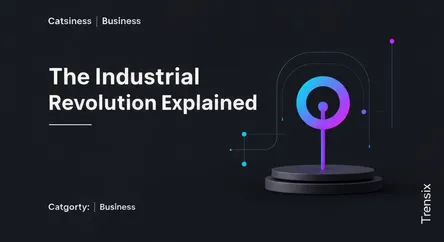Business
The Industrial Revolution Explained

Explore the Industrial Revolution, the historic shift to new manufacturing processes that fundamentally reshaped global economies and modern society.
What is it?
The Industrial Revolution was a period of profound technological and economic change that began in Great Britain in the late 18th century and spread globally. It marked the transition from agrarian, handicraft-based economies to societies dominated by industry and machine manufacturing. Key innovations, such as the steam engine, the spinning jenny, and the power loom, mechanized production, particularly in textiles. This led to the development of the factory system, which centralized labor and production, fundamentally altering how goods were made and how people worked.
Why is it trending?
Historical concepts like the Industrial Revolution trend when they provide context for current events. Today, we are experiencing what many call the "Fourth Industrial Revolution," driven by AI, automation, and data. Analysts and historians draw parallels to the original revolution to understand the potential societal disruption, job displacement, and economic shifts we face. Understanding this historical precedent helps frame conversations about technological unemployment, economic inequality, and the future of work, making it a relevant topic in modern economic discourse.
How does it affect people?
The Industrial Revolution had a massive and lasting impact on people. It spurred mass migration from rural areas to cities, leading to rapid urbanization and the growth of new population centers. While it created immense wealth and a rising middle class, it also resulted in difficult and often dangerous working conditions for the new industrial labor force. It changed family structures, created new social classes, and laid the groundwork for modern capitalism and consumer economies. Its legacy is seen in our urban landscapes, global supply chains, and the ongoing debate between economic progress and social welfare.